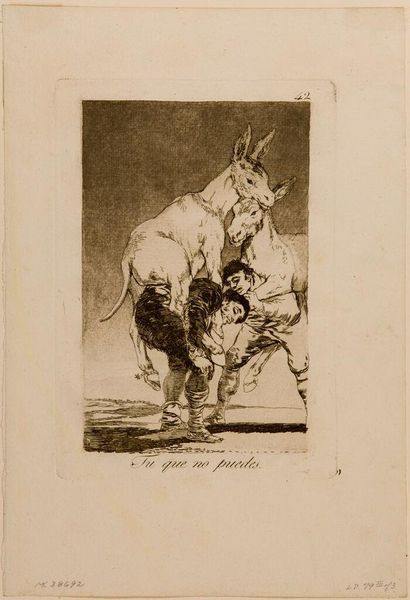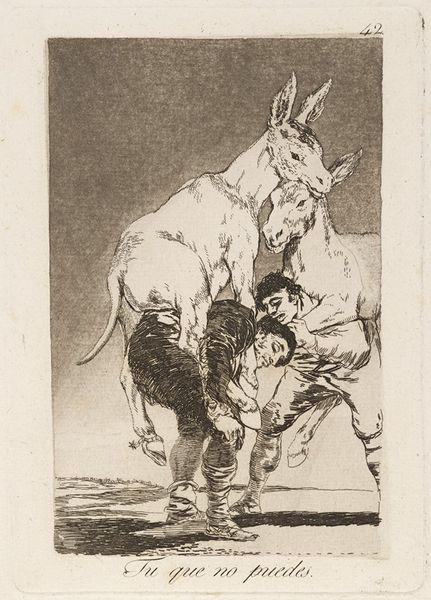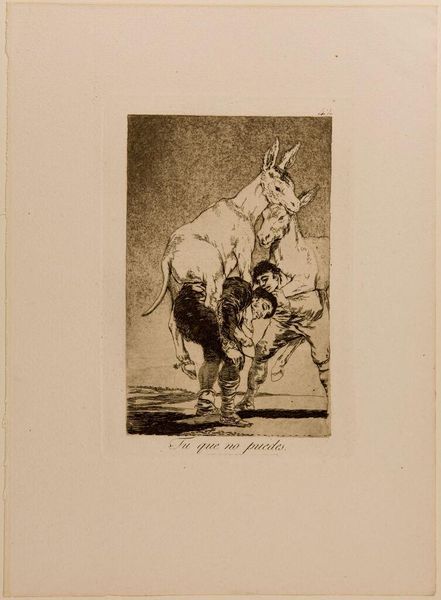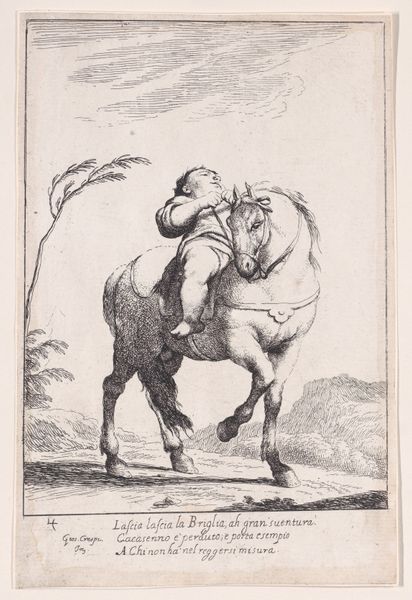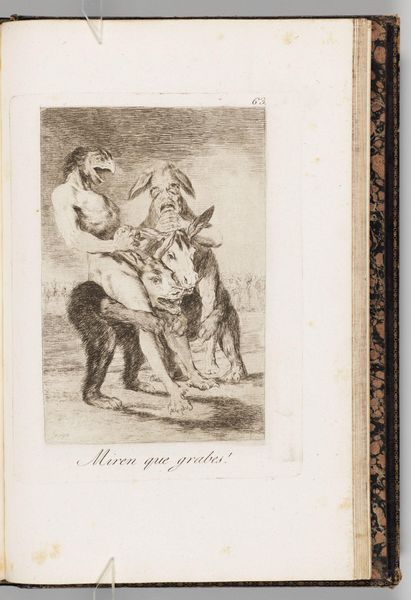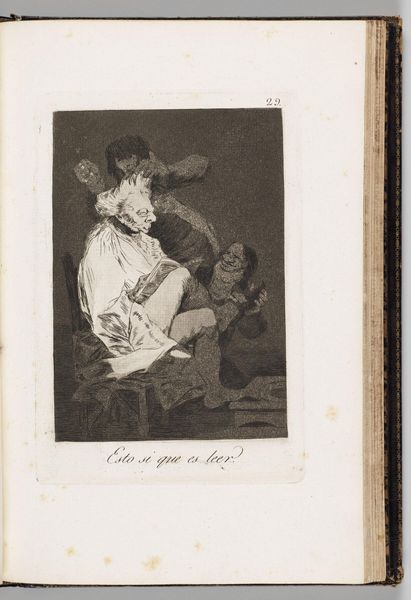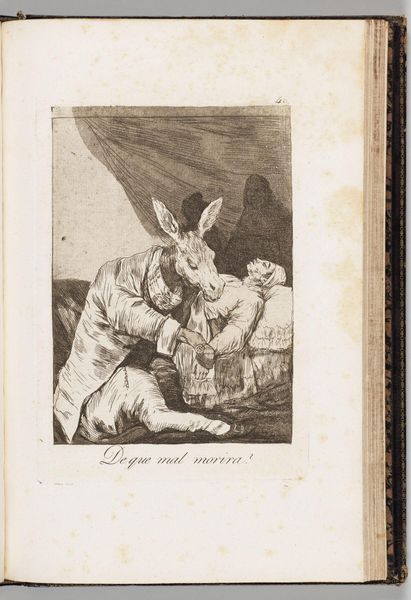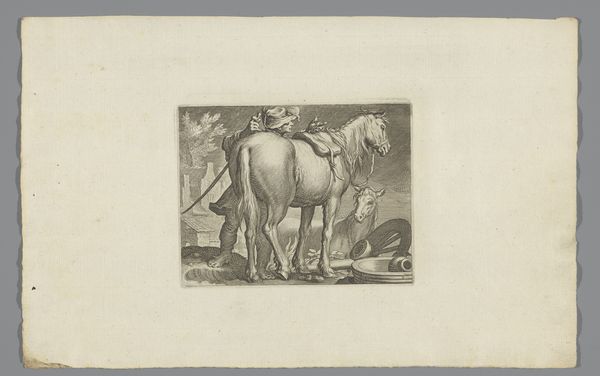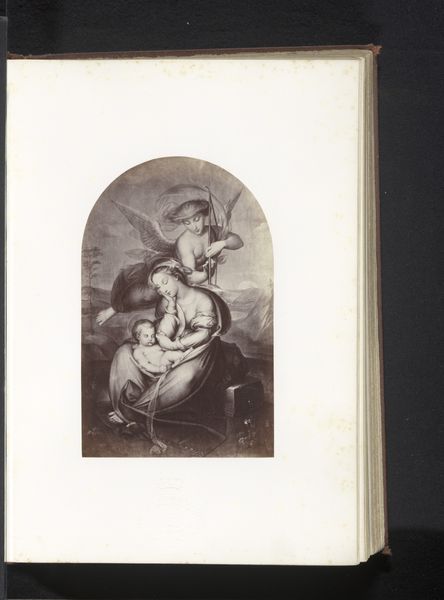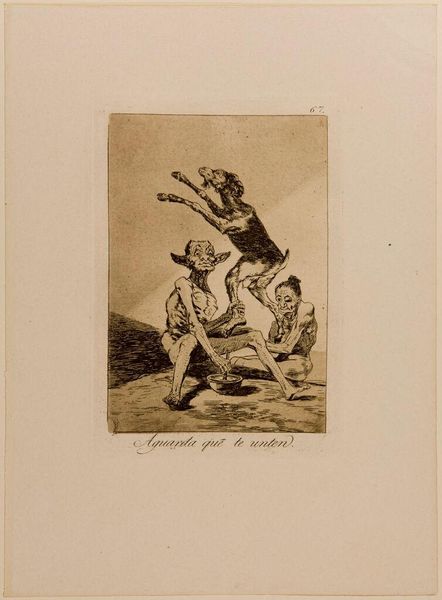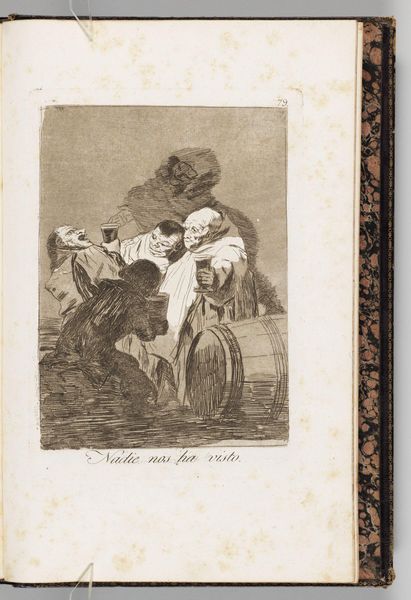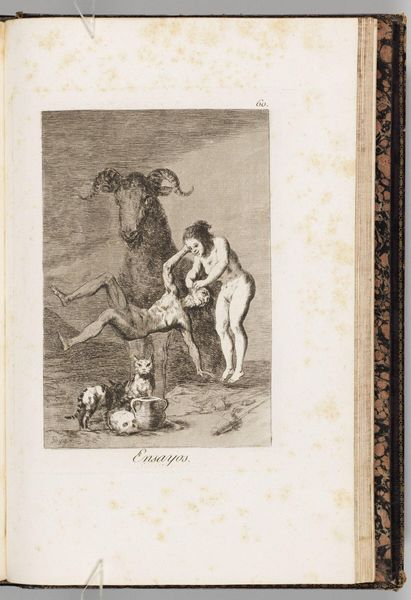
Copyright: CC0 1.0
Curator: Goya's "Thou Who Canst Not," an etching, presents a stark tableau of burden and beast. It feels like a raw nerve exposed, doesn’t it? Editor: Absolutely. The tonal range, the weight of the figures... it speaks of a system collapsing. The donkeys here seem not to be simply beasts of burden, but symbols of a society propped up by the powerless. Curator: Precisely. Goya often used animals to lampoon human folly, didn't he? This image is particularly brutal, though. The men straining under the weight... are they the clergy? The aristocracy? It's deliberately ambiguous. Editor: That ambiguity lends it power. The donkeys themselves become a commentary, loaded with ancient symbolic baggage – stubbornness, ignorance, but also humility and service. It's a fascinating paradox. Curator: It's a paradox Goya revels in. He’s not offering answers, only laying bare the absurdity and the injustice. Editor: And in doing so, he forces us to confront our own roles, our own burdens, and perhaps even our own complicity. It's a difficult, vital piece.
Comments
No comments
Be the first to comment and join the conversation on the ultimate creative platform.
